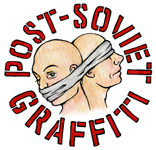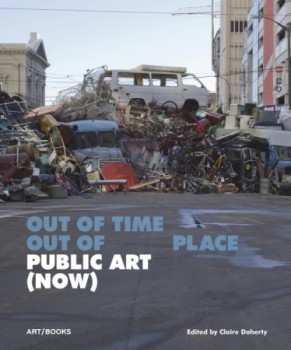“To be seduced is to be diverted from one’s truth. To seduce is to divert the other from his truth. The truth then becomes the secret that escapes him.”
– Jean Baudrillard, On Seduction.
If the curving surfaces exuding masculinity and femininity in bodies can be understood as the physiological locations of seduction, than it is the face, and especially the eyes, which communicate in the most precise ways. All body parts are mined, reproduced and bended to the needs of injected signifiers, but faces convey far more complex an array of ‘information’ and evoke a more wide ranging emotive spectrum than surfaces infused primarily with bodily reproduction. Facial recognition, it can be assumed due to its highly evolved status in the human brain and the early functioning of facial recognition in infants, likely developed long before language captured experience for itself. But faces also seduce, and as it is the eyes of a lover that one (often) hopes to keep entranced, so too do graffiti characters pine for and invite the company of a viewer.
While we traveled through Eastern Europe and Russia this summer we saw not only Cyrillic and anglicized script, but a variety of faces staring us down and staring up to us from the lesser dimension. Whether the prevalent Eastern European culture of staring intensely at strangers which was at play, or whether this lesser dimension lacked its own Carl Sagan to cut open perspective and explain the approaching blobs of spherical flesh, we can never know; but we did know the feeling of captivation that these poor captured souls possessed in us blobs.
One of the ideas shaping our interpretation of political graffiti is that graffiti is in many ways similar to advertising. Not simply because images are projected onto and through the public sphere as symbols of evocation, but by relying on the universal existence of symbology as explored by Claude Lévi-Strauss. This symbolic world can be built upon, and one can see graffiti as existing within the same cycles of symbolic reinforcement and within the same systems of consumerism as the fleshy people-parts making up billboards and commercials. In more evolved states, both the advertising and graffiti often seek correspondence with the viewer in a powerfully one-sided way: the experience of desire grabs hold of someone and encloses their world. It is no longer simply a message conveyed for utility, such as “McIntosh Apples – 99 cents a pound” or “Mike Was Here,” but an experience that captivates and releases the viewer from the everyday flow.
The main differences, of course, are that most of the graffiti we see in urban centers often do not seek to sell anything commercially (though graffiti artists are frequently employed to do just this) and that the images of seduction are not reproduced en masse to overwhelm the public into submission. That has changed somewhat with the increasing popularity and reproduction of popular and iconic street artists, such as Banksy, Shepard Fairey, and others.
Baudrillard’s ideas on the use of seduction in popular culture interact well with this graffitied set of eyes. More complex images are not necessarily superior to those more simplistic in terms of their interaction with time and level of intensity. A simpler depiction of eyes can seem full of time in the richness of the experience they create, while another more complex set can appear stuck in the two dimensional-form, in which it becomes all the more destined to disappear.
This seductive image, highly fetishized and meaningful to consumers, entrances its observer. For example, the end of this BBC news report shows two men fighting over the property of a billboard, normally a material of projection, which Banksy had instantly converted into a material of seduction and consumption by painting on it.
“[E]verything returns to the void, including our words and gestures. But some, before they disappeared, had the time, anticipating their demise, to exercise seduction others will never know. The secret of seduction is in the evocation and revocation of the other, in movements whose slowness and suspense are poetic, like a slow motion film of a fall or an explosion because something has had, before fulfilling itself, the time to be missed and this, if there is such a thing, is the perfection of ‘desire’.”
Jean Baudrillard, On Seduction.
Giorgio Agamben’s mention of the fleeting instant relates to this as it is this fourth dimension which is being possessed by, or is rejecting, these faces in their attempt to seduce. Beauty in faces, understood as the creation of a geometrical symmetry, isn’t very convincing due to the narrow definition of what it is to be symmetrical. Also, because of the diversity in speaking voices, or what Bakhtin referred to as ‘heteroglossia,’ a medium exists in which a variety of faces can all presumably capture an instant in different ways, with symmetry an unlikely fixed variable. Though timelessness cannot be achieved, the space between the before and the after of experiencing one of these faces is opened up and extended. This theoretically leaves open a time before the meaning in ‘history’ catches up in which images can be seen in a more animate and personal form.
“The modern concept of time is a secularization of rectilinear, irreversible Christian time, albeit sundered from any notion of end and emptied of any other meaning but that of a structured process in terms of before and after. […] The experience of dead time abstracted from experience, which characterizes life in modern cities & factories, seems to give credence to the idea that the precise fleeting instant is the only human time. Before and after, notions which were vague and empty for antiquity – and which, for Christianity had meaning only in terms of the end of time – now become meaning in themselves and for themselves, and this meaning is presented as truly historical.”
Giorgio Agamben, Critique of the Instant and the Continuum.
Of course, when you walk past a graffiti face you see it in the present, but when that graffiti captures in a viewer the fleeting instant of human time a depth opens up in it, and that depth is not simply the added human temporality of memory. We may remember the googly-eyed figure just as long and as well as an artful look of concern, but one image is visibly more equipped to create an intensity. A way of looking at this is to see this as an interaction of time signatures where a strong dimensional exertion is created in the network between the passers-by and the image itself. This draws the viewer into elongated time and causes them to begin to miss what is in front of them as it is still happening, while not yet being overwhelmed with historicization.

“If you paint in this courtyard, you will get a beating.” August 2011. Saint Petersburg, Russia. (Photo: Kolya Troy Beek).
Despite its combative textual glory political graffiti lacks something which is harnessed in the more devoutly aesthetic. Much like that quick-tongued, sweater-wearing revolutionary Marxist in which you always hoped to find a poetic, soulful warmth, confrontation often shapes the symbolic structure of political graffiti. So we collected these faces and eyes from a more apolitical dimension living alongside the political. Direct political messages just don’t seem to seduce in the same way as pensive and emotive characters, who invite the experience of time despite history.
“The fundamental contradiction of modern man is precisely that he does not yet have an experience of time adequate to his idea of history, and is therefore painfully split between his being-in-time as an elusive flow of instants and his being-in-history, understood as the original dimension of man. The two fold nature of every modern concept of history, as res gestae [things done] and as historia rerum gestarum [history of events], as diachronic reality and as synchronic structure, which can never coincide in time, expresses this impossibility: the inability of man, who is lost in time, to take possession of his own historical nature.”
Agamben wrote this in 1976 before networking technologies so thoroughly created an experience where the past is now almost instantly converted into text and digitally spread throughout historicizing networks. Strings of interconnected events squeeze the instant and take over the experience of present until the moment is diverted and pulled into the safe haven of seductive pupils within surrounding faces, slowing time into the ineffable, but never to a stop.
It is seduction that pulls one in; with seduction accomplished through aesthetic beauty and with beauty as the cove of bent of time accessible to us within certain arrangements of space. This time is not experienced as historical time but as an escape from history, within one’s being-in-time. It is this delusional floating which fuels the consumption of commodified culture on a massive scale, which can now be found in any screen-filled room with high speed internet.
Political graffiti does not tap into this seductive equation. By virtue of the nature of its content, it seems stuck in two dimensions. It can often only seduce one towards hard, visible power instead of through the curving surfaces of soft, hidden power – those which evoke ‘humanity’ and systematized licentiousness rather than command belief. Its end does not offer to the viewer a harbour of alternate time but pushes one into the current. This is one reason why the strategy of Misha Moзt to ask big questions, such as his famous ‘Sachem?’ (what for?), is so effective while remaining political in nature – because questions can be stylized and incorporated by viewers themselves who are otherwise allergic to visible doctrine.
The challenge is to make political graffiti with an aural fourth dimension. Political ‘environments’ are not only crashing through continuous global realignments, but popular movements also lack consistent ideological coordinates due to perpetual crises incurred through markets, and developed and intensifying global trends are still largely mystified and yet to approach their logical conclusions. In this era, capturing in a viewer the fleeting instant of human time must be everything but possible. The aesthetic in all its seductive potential and the motifs often adopted in political graffiti seem incongruent at this time. For that to change, especially in Russia, it is politics which would have to shift, be drained of its mystifications, and be pulled out of the aesthetic dimension.
“The logical result of Fascism is the introduction of aesthetics into political life. […] All efforts to render politics aesthetic culminate in one thing: war.”
– Walter Benjamin, The Work of Art in the Age of Mechanical Reproduction.
Kolya Troy Beek


















1 Comment